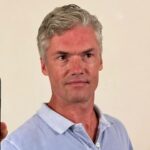-
 News
When glucose levels are low, chemotherapy ceases to affect cancer cells
News
When glucose levels are low, chemotherapy ceases to affect cancer cells
-
 News
Excessive treatment of prostate cancer in older men may reduce quality of life without increasing its duration
News
Excessive treatment of prostate cancer in older men may reduce quality of life without increasing its duration
-
 News
Brain cancer can be cured by viruses
News
Brain cancer can be cured by viruses
-
 News
Ways to reduce lymphatic pain in breast cancer have been found
News
Ways to reduce lymphatic pain in breast cancer have been found
-
 News
Scientists have turned bacteria into a powerful weapon against cancer
News
Scientists have turned bacteria into a powerful weapon against cancer
All news
Pituitary adenoma treatment
A pituitary adenoma is a benign tumor of a gland located in the lower part of the brain. Distinguish between hormone-active and hormone-inactive adenomas, and depending on the size: microadenomas (less than 1 cm) and macroadenomas (more than 1 cm).
Diagnostics: MRI, visual-spatial tests, detailed analysis of urine and blood.
Modern treatment is carried out using the methods of radiosurgery and robotics. In the case of microadenomas, surgical removal is performed using an endoscope — endoscopic resection of the neoplasm. The procedure is performed through the nasal passages, which reduces the trauma of the process and shortens the postoperative period.
MedTour patients recommend clinics for the treatment of pituitary adenoma:
Doctors for the treatment of pituitary adenoma
Patient reviews
Frequently Asked Questions
Pituitary adenomas are tumors that occur in the pituitary gland. Pituitary adenomas are generally divided into three categories depending upon their biological functioning: benign adenoma, invasive adenoma, and carcinomas.
Pituitary adenoma is a group of tumors that occurs in 16-22% of the adult population (ACS). Most adenomas are benign, approximately 35% are invasive and just 0.1% to 0.2% are carcinomas.
- Hormonally inactive microadenoma (up to 1 cm) is asymptomatic.
- Pituitary macroadenoma (from 1 cm) presses on the optic nerve. It manifests itself as a headache and a violation of peripheral vision, up to blindness.
- Active pituitary adenoma produces an excess of hormones and causes weight, blood pressure, blood sugar, sweating, body temperature, hair growth, menstrual cycle, digestion, and sexual desire disorders.
- Brain MRI (1.5-7 T) with contrast. Further examination depends on the location, size, and invasiveness of the tumor.
- A blood test for hormone levels (endocrine panel) shows hormonal activity.
- PET-CT with glucose and / or somatostatin. It helps to evaluate the malignancy and activity of the tumor, calculate its growth and risks.
- Pituitary biopsy with histology, immunohistochemistry, and genetic analysis. Tumor composition and genetic markers indicate the risk of relapse and the need for surgery.
- Benign pituitary adenoma does not affect life span.
- With pituitary oncology 82% of the patients live for at least five years after (ASCO, 2020). The indicators depend on the correct treatment, patient`s age, and general health.
- With no treatment, a large adenoma (more than 4 cm) presses on the vital centers of the brain and causes cardiac and respiratory arrest.
- By wrong treatment, a hormonally active adenoma causes hypertension, diabetes, cardiac arrhythmia. This leads to a heart attack or stroke.
- Surgical removal through the nose. This is the most effective and safest method to remove certain types of adenomas.
- Surgical opening of the skull. Used for adenomas from 4 cm in size, when the surgeon cannot remove it endoscopically.
- Stereotactic Radiosurgery (Cyber and Gamma Knife). Non-surgical removal of adenoma with precision radiation beams, is used for inoperable patients.
- Trans-Nasal endoscopy (through the nose) pituitary adenoma removal:
Europe — from € 12,000
Israel — from $ 30,000
South Korea — from $ 14,000
Turkey — from $ 12,000
India — from $ 7,000
Ukraine and Belarus — from $ 3,000
- Transcranial surgery to remove the pituitary adenoma (craniotomy):
Europe — from € 22,000
Israel — from $ 35,000
South Korea — from $ 25,000
Turkey — from $ 20,000
India — from $ 9,000
Ukraine and Belarus — from $ 5,000
- The cost depends on the clinic, the complexity of the surgery, and the duration of the rehabilitation.
- Removal surgery is considered for adenomas from 1 cm, given its invasiveness, growth rate, symptoms.
- Regardless of the size, removal of the pituitary adenoma is considered for hormonally active adenomas that defy medical treatment.
- The tumor has to be removed if the histological and genetic examination shows the aggressiveness markers or dangerous mutations in adenomas.
A severe hormonal deficiency develops after the complete removal of the gland, which requires life-long medication. Therefore, it is important to maintain a healthy part of the gland.
If removal of the adenoma was incomplete, an increase in the tumor remainder and relapse of the disease can occur. Such patients need repeated surgery, which carries an additional health risk.
The scope of the surgery depends on the surgeon’s experience and the quality of endoscopic equipment, where the tumor removal has to preserve the pituitary gland as much as possible.
Accidentally identified microadenomas have to be controlled in dynamics. MRI has to be done every 6 months from the date of detection, then once in a year.
In the case of microadenomas with endocrine symptoms or growing microadenomas the drug treatment should be prescribed according to the blood test results.
Resistant active adenomas, invasive adenomas, or macroadenomas are considered as surgical treatment.
In the case of malignant pituitary adenoma, surgical treatment, chemotherapy, targeted, immune, and radiation therapy is applied.
20 years after brain irradiation, the risk of oncology increases so Cyber and Gamma knife is prescribed for patients with inoperable adenoma, over 75 years old, or with severe concomitant diseases.
The best medical centers for neurosurgery and endocrinology are in Germany, Israel, Austria, and Turkey. MedTour constantly updates information on the leading clinics for pituitary adenoma treatment all over the world. You are welcome to check it on our website.
Published:
Updated:


Information on this webpage verified by the medical expert









Велика подяка за життя. Возняк Олександр Михайлович, Зенкевич Ярослав Павлович.
Кажуть Феофанія для міністрів, ні ця лікарня для людей. І я цьому приклад. Кожного року після операції присилаю МРТ на контроль. Ні разу не відмовили. Всіх пам’ятають, хоч я простий український роботяга. Ці люди від Бога, для людей!